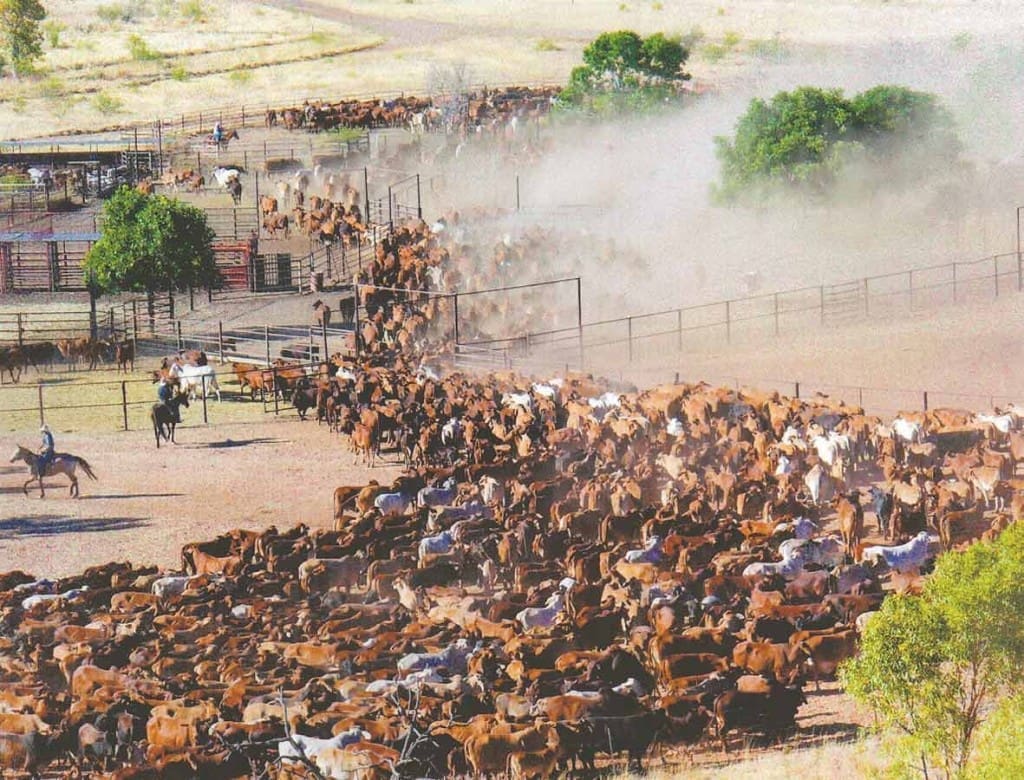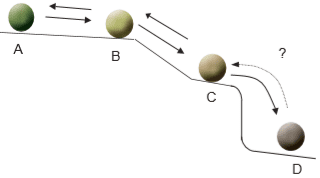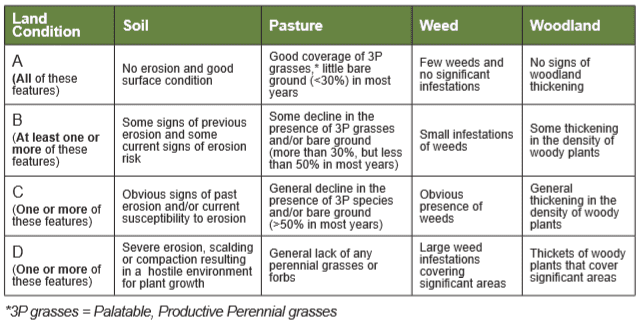
IF A premium is paid for a property based on non-existent or overstated development potential, is it simply a case of ‘buyer beware’ or a lack of due diligence?
In this first part of a two-part series, valuer Frank Peacocke from Herron Todd White steps through the process of due diligence on beef property acquisitions.
While there is no doubt that the Northern Territory and Kimberley pastoral markets have strengthened over the last few years, the prices paid for a small, but growing number of pastoral leases have been difficult to comprehend.
Some buyers have paid premiums reflecting perceived development potential for a higher land use (such as for commercial cropping development) or for picking up the neighbour’s block to add scale.
However, there have been a number of sales where the disproportionately high value rates could only be attributed to ambitious current productivity estimates – significantly overestimated carrying capacities.
Frank Peacocke is HTW’s Darwin-based rural property valuer.
He admits the sales don’t stack-up on a dollar per productive unit basis ($/Adult Equivalent) when compared to other sales and value expectations generally prevailing in the region.
“It comes down to an over-estimation of what these properties can sustainably carry over the long-term given their current development and current land condition. Either the purchaser has overestimated, or the vendor has overstated, the current carrying capacity.”
“Some of the estimates of current carrying capacities associated with certain pastoral leases are more reflective of the capacity average after a run of well-above average seasons, compared to a long term average of 10 years which would also take into account the well-below average years (as is the case with the present big dry),” Mr Peacocke said.
Long term stocking rates
When cattle stations in the NT/Kimberley are being bought and sold on their current carrying capacity, he suggests it is worth spending the time and the investment on appropriate due diligence to justify as best as possible, a reasonable long-term carrying capacity.
Once the current carrying capacity is accurately assessed (ie total AEs at current development), a producer can determine the sustainable size of the breeder herd and if a realistic breeder herd benchmark number can be set, then the real production targets (branding percentages and growth/turn-off rates) can be pursued.
Mr Peacocke said this will ultimately determine the number of animals (or kilograms) sold off the station to generate the cash flow required to run the property, develop it further, earn a decent margin and pay the interest on the investment.
“The long-term carrying capacity benchmark will obviously be exceeded in above average seasons, and will come in short for below average years, but there needs to be a sustainable long-term benchmark,” he said.
Overestimation impacts land condition
Mr Peacocke said trying to adhere to an overestimated carrying capacity could lead to decreasing land condition.
“This would further reduce the real underlying (sustainable) carrying capacity of the country and if the property was purchased on an overestimated carrying capacity, then the negative impact may have a compounding effect.”
Mr Peacocke said the ‘slippery slope’ diagram (see below) relating to land condition has been around for a long time, but appears to have been overlooked in some recent transactions.

The above diagram was sourced from a typical land condition guide by the NT Government, and the same resource has been widely used by MLA in its Grazing Land Management’s EDGE network workshops undertaken by many in the pastoral industry. It is also adopted as the basis of rangeland condition assessments by the Queensland and Northern Territory primary industry departments for monitoring the pastoralist’s adherence to the lease conditions. Remember, basically all of the large-scale grazing country in the NT and Kimberley is perpetual (NT) or longer term (WA) leasehold with set lease conditions.
Mr Peacocke said the ABCD land condition scale has a real impact for carrying capacity assessments and should be top of mind when considering the long-term production prospects for a station, and particularly its future development potential.
“For example, when land condition slips from B to C, carrying capacity will probably fall by 25 percent and it is likely to take a long time (potentially, many years) to regain the B land condition which generally requires destocking of the affected area. Such an event has a direct negative impact on productivity and potentially the property’s future value.”
Land values
Mr Peacocke said the value of a cattle station should be able to be broken down into three main components:
- Value of the portion developed (land currently utilised – within a reasonable grazing radii of permanent water and including fences, waters, roads)
- Value of the undeveloped portion (unutilised land outside of reasonable grazing radii and without any pastoral infrastructure in place), and
- Added value of the buildings, yards etc.
He said the overall $/AE value from a station sale will reflect the proportional value of each, and crucial to this $/AE is a realistic long-term productive capacity assessment.
“If you can’t justify the sustainable carrying capacity (1) without a reasonable level of confidence, then how can you effectively place an accurate value on (2) or safely plan for its future development?” he asks.
“If the productive capacity of an (as yet) undeveloped portion of country on a station is overestimated, then there is a real risk that future investment on that land may end up proving to be an overcapitalisation,” Mr Peacocke said.
Knowledge is key
He urged those looking to buy a northern cattle station to build up their knowledge bank of pastoral land values in order to analyse every property in a consistent manner, and gain some relativities between them.
“Pick an average standard of management for that region – one that would achieve optimal, yet sustainable production targets over the long term, and in association with this, be consistent with your approach to estimating the current and potential carrying capacity (on an AE basis).”
Mr Peacocke said potential buyers should use the carrying capacity assessment to gauge the proportional values of the previously mentioned three main components.
“By following this method, some of the significant price inconsistencies that the pastoral market has thrown out there over the last five to six years (but particularly over the last three) will be revealed.”
Mr Peacocke said that within a region, two or three NT sales comprising similar classes of country, that sold within 12 months of each other, were poles apart in terms of analysed $/AE rates.
“Although the market had strengthened over the 12-month gap, the price differential was too great to be caused by strengthening value levels alone. There is a high chance it was due to overestimated current and potential productive capacity estimates.”
Words of advice
Mr Peacocke urged all prospective buyers to undertake appropriate due diligence.
“Potential buyers using a rural valuer or other consultant as part of their due diligence should ensure they can justify the carrying capacity assessments for both the developed and undeveloped portions of the station, and not only for the one looking to be acquired, but also for the station sales they will rely on as crucial sales evidence.”
- Next week: Other property industry experts weigh in on due diligence and its impact on beef asset valuations.


A late comment to the article. It seems that buyers are investing in land for capital gain and possible alternative land use.
Frank Peacocke is very correct. Disaster waiting to happen.
Finally someone has been brave enough to say this out loud!
Thank you, Frank !! Certainly a step in the right direction … we must adopt a look-through-the-cycle approach … as in this valuation space, the past productivity is definitely a guide towards future expectations … and discovering a value for investment purposes is all about a Return on Invested Capital being greater-than the Weighted Average Cost of Capital, through the period of ownership … sure, a buyer may pay a lot more to secure the asset, and then impair the asset back to a ‘fair investment value’, yet the proportion of debt servicing and carried-forward losses ensures you may never make an economic profit … and you have as an ‘investor’ both purchased yourself a job, and created a millstone around your neck … and an eternal hope that a ‘bigger-fool’ may come along at the eventual forced-exit, and pay a much higher price …
You are now a Speculator, by definition … in the hope that rising prices will go on forever.
The most famous four words in the investment landscape are, “Its different this time …”
The aim of a good investment is likened to going into a building … one must have an eye on the exit early, in case the worst happens, yet enjoy the experience whilst you are in there …
Yes, ‘potential’ has a value that must be ascribed … yet, the cost of that investment must be deducted from the expected returns … both income and capital.
IMO, Value and Price parted company nearly 30-years ago … albeit the price trend seems to be drifting back in recent times (with the competitive downward pressures on price of beef) towards the long-term value trend … maybe only caused by this extreme drought … or just maybe, by sensible NPV calculations, and the selection of an appropriate Discount Rate (for example: an about-right Equity risk, looking through a 10-year rolling cycle, of around 32.2% for a sustainable stocking-rate of around 1-beast: 40-Acres, on a Weaning-Rate of around 67%, might lead to a WACC of around 24.2% and an implied beta for non-systematic risk in a CAPM process, surprisingly of around 3.82-times more risky than the market for equities), as the denominator … a Discount Rate that arguably and truely reflects the long-term inherent risks in the livestock grazing space.
Land Value component in the grazing context, as a percentage of total assets (EV) required to earn an expected level of revenue and profit, might arguably be around 45% to 55% … this would include the value of any improvements, both on, and to the said land (as the land is the factory in the farming/grazing space).
A quick analysis over the past few decades shows land value commanding a much higher proportion of Enterprise Value.
This is a mistake … as productionability is constrained by seasons and demand … quantity and price of meat … and, of course, the boundary-fence … real fundamental value increases comes from sustainable productivity increases … where’s the extra drivers of value?
It should not be ‘money trying to find a home’, and bankers seeking to retain market-share in this space, that pushes up real-asset prices … a huge mean-reversion may materialise as those ‘jaws’ snap-shut …
To pay a premium above a likely fundamental value (or fair investment value) is a choice … the size of the premium, and therefore the transaction price paid, confirms whether the investment remains so; or the exercise is a mere speculation, poorly executed.
We shall see … 😊
At the end of the day, it is a willing buyer and willing seller. If I want to go buy a mink coat for $2 million, that someone else reckons is only worth $1 million, then I will be the one with the mink coat, not the other person.
My reasons for valuing the mink coat are many and varied, and may have no real reflection on its ability to earn money by renting it out or it starring in photot shoots.
I may want to keep it in a cupboard for ten years, and not wear it at all.
One thing is for sure, no one knows what the value of the mink coat will be in ten years, or its income potential, as there may be a glut of mink coats then and hiring it out is worth nothing or there may be a scarcity and I have the only mink coat for hire in the world.
I suggest that the buyers have a long term view and they think the price of beef is going up, up, up. Only time will tell if they are right, but it is their risk and their free right to take that risk.
Yes, these are pertinent comments that you make … for ‘value’ may lie in the eye of the beholder … though I do remember well the price of beef in the early 1970’s … and the aftermath … the fallout post ‘Armageddon’ was beef prices per Kilogramme have roughly doubled around 2.5-times since then (46-years), implying a year-on-year linear compound growth of around 3.9% per Annum.
At the same time, a brief analysis of beef cattle property prices may reveal that price being paid (whether on a ‘bare’ or ‘WIWO’ basis) has risen more exponentially. Say from $2.50 per Acre (WIWO) then, to around $500 per Acre (WIWO) now. This implies a linear compound growth rate of around 12.0% per Annum.
Somethings gotta give … eventually …
A ‘jaws’ has appeared in a graph of price V’s value of some significant proportion … and typically in a market behaving this way, the ‘mean-reversion’ event may be catastrophically shocking … and coming soon enough.
Fundamental value (as price) based on median levels of production, and looking through the lense of long-term 10-year rolling cycle … now they are the numbers one may plan upon successfully … with a keen eye on prudence and risk.
For a cash-flow producing asset, the underlying fundamental value is all about the likely expected cash-flows into the future and towards the investment horizon.
Expectations, and the premium paid will need to be tempered … maybe leaving something on the table for the next guy … as one makes their money when they buy: not necessarily when they sell … food for thought.
Do enjoy your gorgeous Mink Coat! 😊
Thank – you Frank
Due diligence – actually going and talking to your prospective neighbors is an excellent place to start.